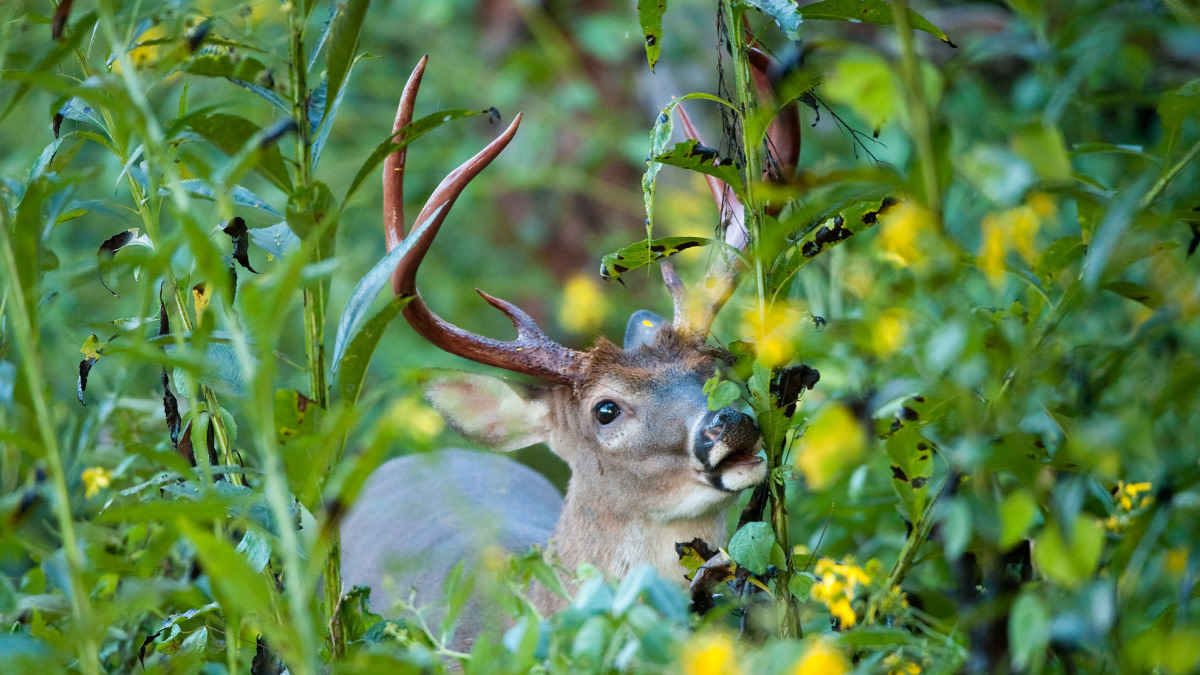
If you’re fortunate enough to hunt whitetails in early September, you know how effective it can be to pattern bucks on their summer feeding routine. Factors like hunting pressure vary a bit from state to state, but this summer feeding pattern will soon come to an end, which often happens in conjunction with the shedding of their velvet. In my experience, while hunting the Great Plains, bucks shed their velvet around the first week of September and remain on their summer feeding pattern for about a week after becoming hard-horned.
Perhaps the biggest factor in determining how long a buck will stick to his summer routine depends on his perceived hunting pressure. If he notices an uptick in human disturbance, he’ll likely alter his routine accordingly.
The Hard Data Matt Ross and the National Deer Association recently published an article that conveniently summarizes the data collected by dozens of whitetail GPS collar studies. The article, “10 Things We Know About Mature Buck Movements," concludes that “home range can shift and grow seasonally with outside influences. Even though a mature buck lives within what biologists call a home range, where he is located 90 to 95 percent of the time during the calendar year, researchers have found that a variety of factors (food, cover, etc.) can greatly influence where that buck may be within that home range during different seasons.”
Ross also noted that “intensity of use of that home range increases from summer into fall,” meaning that bucks occupy a smaller portion of their home range with less deviation. Of interesting note, GPS data confirms that site-fidelity increases as bucks age. “This is a fancy term that essentially means bucks are less likely to leave or change where they live as they get older,” Ross said.
When combined with opening day hunting pressure, “on two projects where deer had spent considerable daytime hours pre-season in open fields and food plots, the same individuals intentionally avoided those same areas until after dark once the season opened,” Ross said. This data confirms that even pressured bucks are reluctant to vacate an area entirely, so don’t give up hope.
External Factors & Considerations After studying GPS data, it’s clear that there isn’t a silver bullet to knowing where mature bucks will be once their velvet is gone; there are too many external factors at play. Bachelor groups are breaking up, in which bucks sort out their dominance and corresponding core areas. The shedding of velvet also correlates with the changing of the seasons, which means that preferred food sources begin to change as well. Lastly, hunters begin taking to the woods. A mature buck’s existence depends upon evading hunting pressure from season to season.
Each of these factors probably carries more weight when a buck is determining where to travel next than velvet shedding alone, so keep in mind when developing your next hunt plan. Chances are, the buck you were watching throughout the summer hasn’t gone far. In many cases, he might not have gone anywhere at all and is now exhibiting nocturnal-like behavior.
To solve this puzzle, my strategy has been to work backwards. If you were glassing bucks on evening food sources, simply work back into the timber, where bucks feel more comfortable moving in the daylight. If you know the whereabouts of his bedding area, even better, work your way back towards the bedding area and connect the dots between bedding and food. All of that is to say that whitetail patterns look similar from early September to late September, but instead of a buck getting out of his bed 10 minutes before sunset on September 1, he might not get out of bed until 10 minutes after sunset on September 20.
For those of you grinding it out on public dirt, hunting pressure is commonly the biggest factor contributing to his change in pattern. In this instance, your target buck has likely retreated to the thickest cover available, away from common public access points.
And whether you're on private or public, this can be a good time to hunt staging areas. From mid-September to late October, these can be some of the most productive places to kill a buck. Check out Tony Peterson's video on how to identify and hunt these underappreciated spots.
Unless you’re preserving your best spots for the rut, it might be time to get aggressive and hop around with your mobile setup. Take what you’ve learned about the buck’s core area and evaluate the factors at play. Sometimes the only thing preventing you from wrapping your tag around bone is a new setup just inside the timber.
Feature image via Matt Hansen.




